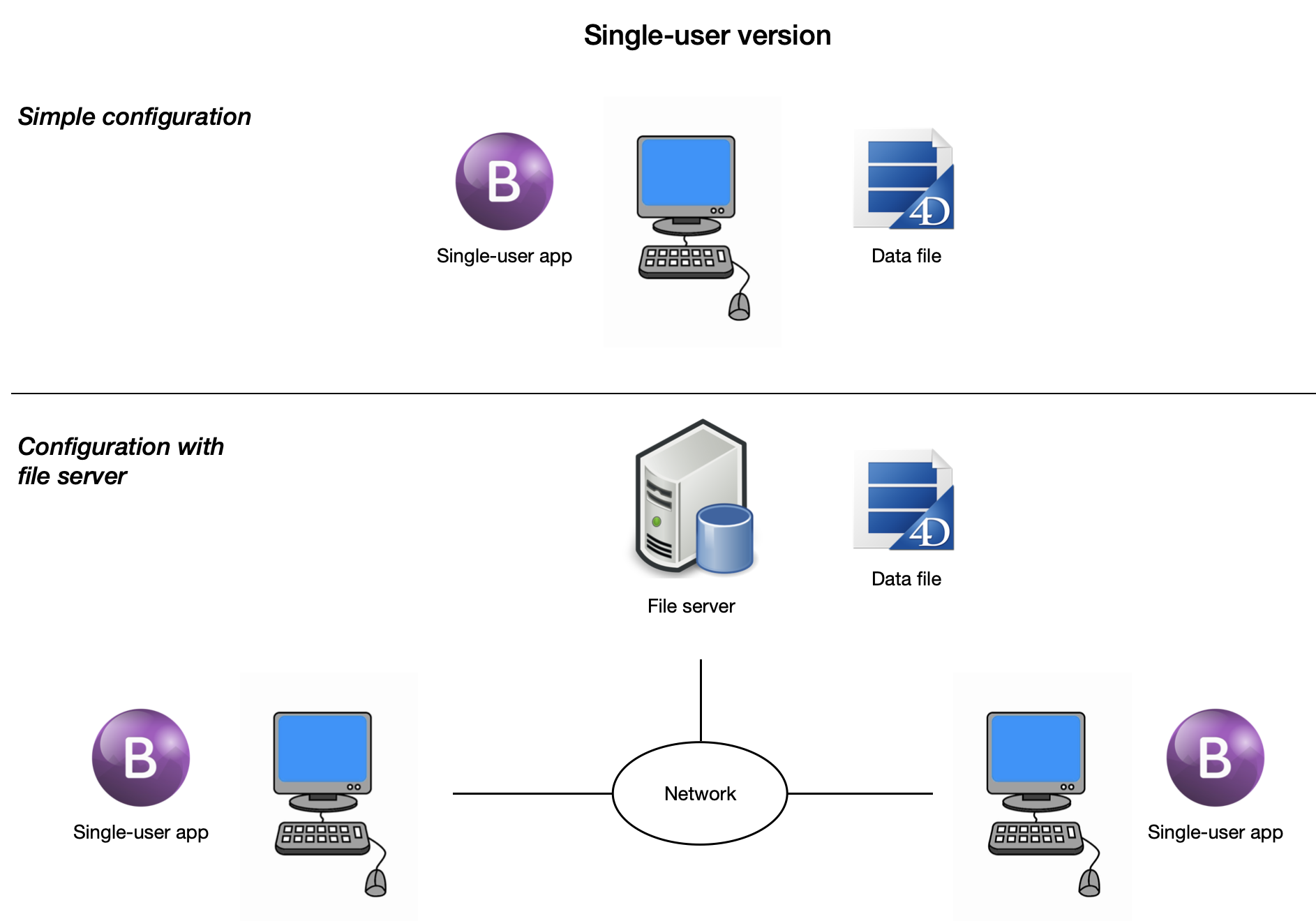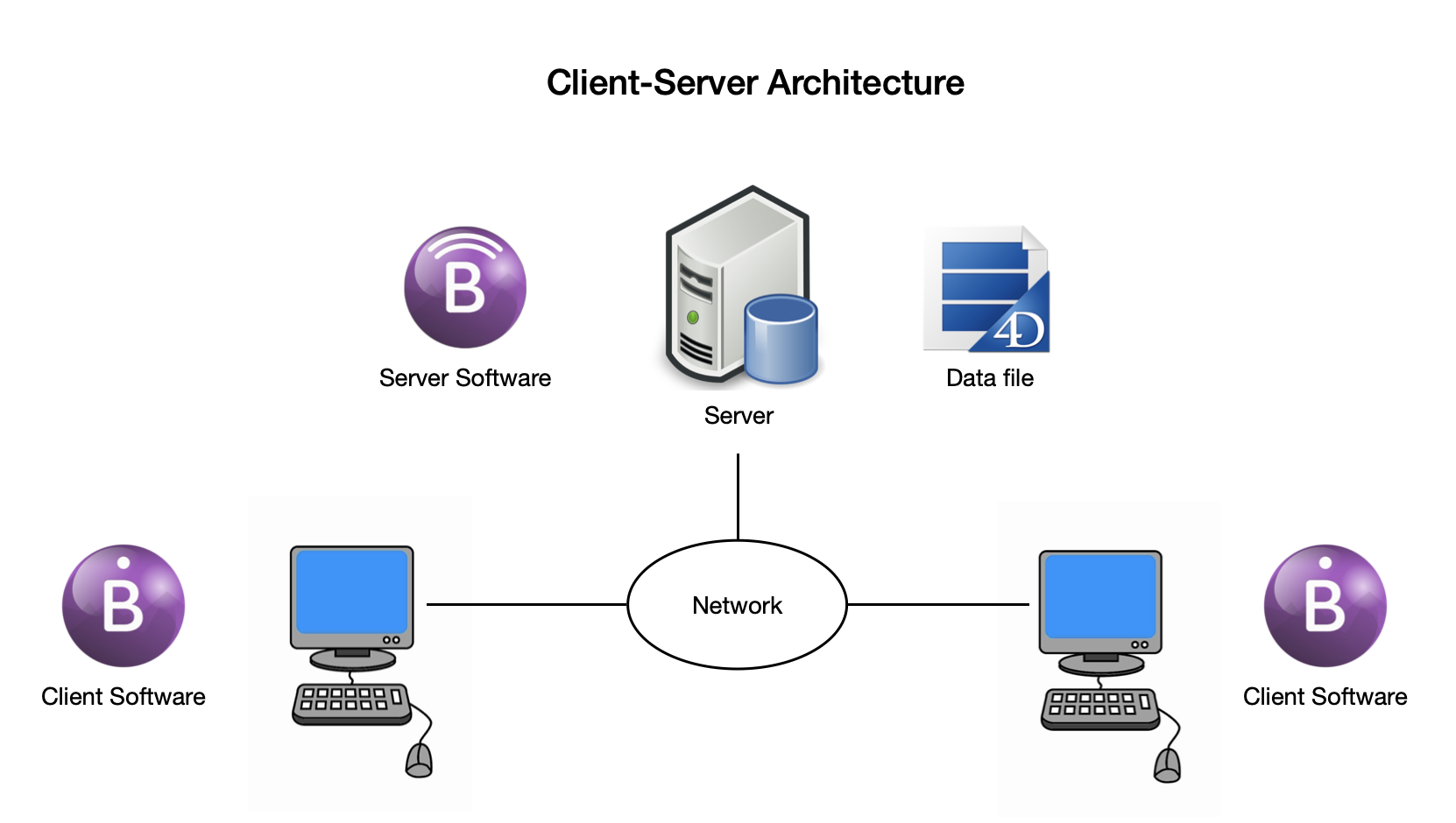Single-user version, client-server architecture: what are the differences?
Office Maker and BiblioMaker are available in single-user and client-server versions. What's the difference between these two configurations? This article provides an overview, so that you can choose the best option for your situation and expectations.
Single-user version

As the name suggests, the single-user version is intended for users who work with the software alone. In its simplest configuration, the program and data file are installed on the workstation.
However, it may happen that several users wish to work with the software, but arrange their access to the data in such a way that it is not simultaneous. In this case, the data file can be hosted by a file server accessible from several workstations via a local area network. With this configuration, the first user to connect to a data file will block access to other users. It is essential that all workstations are equipped with the same version of the software, since updating the data file with a more recent version of the software prevents older versions of the software from accessing the file.
Client-Server Architecture

This architecture involves workstations on which client software is installed, on the one hand, and a central server on which the data file and server software are installed, on the other. The latter publishes the data file on the network using a proprietary protocol, and manages simultaneous access to the data file. Client workstations connect to the server via the client software. This access can be simultaneous, and the maximum number of simultaneous accesses is defined by the program license.
Client-server architecture is essential when several users need to work simultaneously on the same data file (for example, with Business, one user manages the address file while another creates invoices and a third controls the stock of items).
This architecture requires a dedicated server (using a workstation as a server is not recommended for performance and security reasons) running Windows or macOS to run the server software: a simple file server (such as a NAS server) is not suitable.
Our cloud solution uses client-server architecture: our cloud server hosts your data file and server software, while your workstations are equipped with client software.
Web Server
Office Maker Business and BiblioMaker include a web server to provide access to data via a web interface:
- Business : OMB Mobile is designed to let a representative in the field consult address records, calendar, invoices, etc.
- BiblioMaker : the Web OPAC is designed to let library users search the catalog and consult their account.
With very few exceptions, this integrated web server can only be used with client-server software architecture.
 Français
Français Deutsch
Deutsch Italiano
Italiano